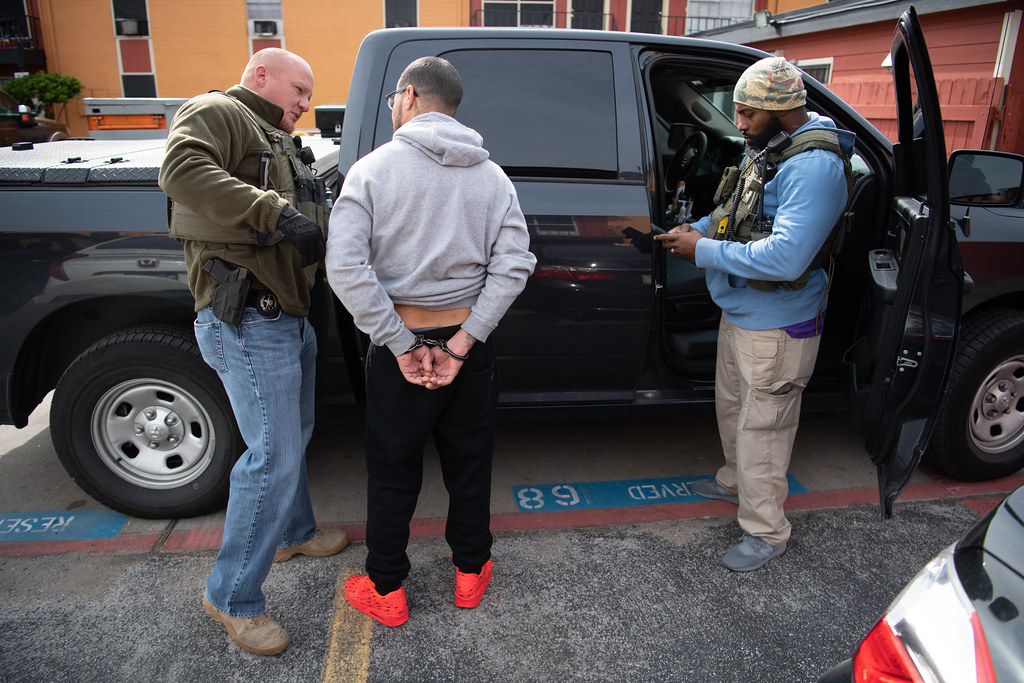Baltimore, Maryland – The Murder Capital That Won’t Let Go

Let me tell you something that might shock you – Baltimore, which has struggled with high crime rates for decades, had the highest murder rate in the country according to the latest Crime in the U.S. report from the FBI. Baltimore surpassed Detroit as the deadliest large city in the nation. What’s really wild is that among cities with populations of 500,000 or more people, it had the highest per-capita murder and robbery rates. But here’s what caught me off guard: despite its top ranking, Baltimore has seen its murder rate drop recently. While new public policies and educational initiatives are possible reasons, experts cite “collective fatigue” as a leading cause for the improvement. Residents are fed up with the violence and are making a communal effort to reduce it.
Memphis, Tennessee – Where Violence Hits Different

Memphis has one of the highest violent crime rates in the country (at 24.37 per 1,000 people), with aggravated assault leading the list. Think about that for a second – that’s more than double what most people consider dangerous. Memphis has topped the charts as the city with the highest violent crime rate in the nation. In 2024, Memphis recorded nearly 400 homicides, surpassing much larger cities like New York City. Memphis recorded nearly 400 homicides, surpassing much larger cities like New York City. Aggravated assaults, armed robberies, and carjackings plague the city, straining law enforcement resources. It’s like the city is stuck in a nightmare it can’t wake up from. According to 2023 crime statistics, The US city with highest crime rate is Memphis of Tennessee State. Memphis is city with more than 624 thousand people, registered 16,076 violent crime cases, Out of these cases, 252 cases of murder, 407 cases of rape, 12,095 cases of aggravated assault.
Detroit, Michigan – The City That’s Fighting Back

Detroit tells one of the most complicated stories in American crime today. Detroit, MI: With one of the highest violent crime rates in the nation, Detroit consistently ranks as the most dangerous city. But wait, there’s more to this story. Detroit has a violent crime rate that remains significantly high at 20.59 per 1,000 residents; the city faces challenges, with aggravated assaults and robberies being particularly prevalent. Economic hardships and population decline have contributed to these high rates. However, I found something hopeful: Detroit’s 2024 homicide rate (37.0) was the lowest the city experienced since 2013. It’s like watching someone slowly get back on their feet after a terrible fall.
Oakland, California – The Paradox of Progress

Here’s where things get really interesting. In 2023, around 3,640.56 violent crimes per 100,000 residents were reported in Oakland, California. This made Oakland the most dangerous city in the United States in that year. But guess what? Violent crime in Oakland decreased by 19% from 2023 to 2024, mirroring a national trend. Even more impressive: Oakland saw big drops in violent crime in 2024, with homicides and shootings falling by double-digit percentages. According to the Oakland Police Department’s end-of-year crime report, published last Tuesday, the city ended 2024 with 81 murders — a 32% decline from the previous year, which had 119. Oakland continues to face significant safety challenges with a violent crime rate of 16.85 incidents per 1,000 residents, making it California’s most dangerous major city by numerous metrics. This rate is approximately 327% above the national average.
St. Louis, Missouri – The Gateway to Danger

St. Louis, Missouri, holds the dubious distinction of being one of the most dangerous cities in America. With a violent crime rate of 14.70 per 1,000 residents, St. Louis experiences a high volume of aggravated assaults, which constitute the majority of violent crimes here. The most dangerous city in the US is St. Louis, with 2082.29 violent crimes per 100,000 people recorded in 2019. High levels of poverty and racial segregation are thought to be contributing factors. Homicide rates remain elevated, with 194 instances recorded in 2019 alone. The 2024 homicide rate in St. Louis (48.6) was slightly below the 2014 rate of 50.1. What strikes me is how this city keeps battling the same demons year after year.
Birmingham, Alabama – Small City, Big Problems

Birmingham stands out for having one of the highest violent crime rates in the southern United States. With a population of just over 200,000, the city reported 151 homicides in 2024, setting a new record. Think about that – a city smaller than most suburbs recording that many murders. Birmingham, Alabama, stands out for its high rates of violent crime (16.94 per 1,000 people), particularly aggravated assaults. This large city struggles with economic disparities, contributing to the crime rate. A recent analysis found that Birmingham’s high violent crime rates drove up the cost of crime in the city: researchers estimated that each crime cost the city $11,392 per capita. It’s like the city is paying a brutal tax for its violence.
Little Rock, Arkansas – The Surprising Hotspot

You probably wouldn’t expect Arkansas to show up on this list, but surprise! The violent crime rate of Little Rock is 18.25 per 1,000 residents, according to recent statistics. Despite its modest population size, the city’s crime rate rivals much larger cities. Despite its small size, Little Rock reports a violent crime rate comparable to much larger urban areas. Aggravated assaults, robberies, and gang violence are common, fueled by drug addiction and economic challenges. Little Rock’s aggravated assault rate decreased year-over-year but it remains first among small cities in the 2022 FBI report. Other types of violent crime, like homicide, peaked in Little Rock in 2022 as well. It’s proof that danger doesn’t always come from where you’d expect.
Cleveland, Ohio – When Rust Belt Meets Real Problems

Cleveland is marked by high rates of violent crimes (16.27 per 1,000 people), particularly aggravated assaults, which significantly affect the lives of its residents. The city’s approach to tackling this issue includes comprehensive community engagement and policing efforts. Cleveland’s violent crime rate remains significantly above the national average. Economic challenges, including high unemployment and aging infrastructure, create a breeding ground for crime. In 2024, Cleveland saw a spike in aggravated assaults, robberies, and shootings. It’s like watching a city struggle with both the ghosts of its industrial past and the demons of its present.
Kansas City, Missouri – The Rising Threat

Kansas City, often overshadowed by its bigger neighbors, now ranks among the top cities for violent crime. With nearly 1,400 violent crimes per 100,000 residents in 2024, homicides and gun-related violence have surged. Kansas City, Missouri, experiences a significant volume of violent crimes (14.83 per 1,000 people), particularly aggravated assaults. What’s scary is how this city seems to be getting worse while others are improving. City officials are investing in new policing technologies and programs to prevent gun violence. Still, activists argue that addressing root causes, such as poverty and a lack of opportunity, will be crucial for lasting change.
Milwaukee, Wisconsin – The Midwest’s Hidden Danger

Milwaukee faces ongoing challenges with violent crime, with aggravated assault being the most prevalent. At a violent crime rate of 15.18 per 1,000 residents, Milwaukee, Wisconsin, is one of the most dangerous cities in the United States. It’s another one of those cities that proves violence isn’t just a problem for the coasts or the South. The city’s efforts to combat crime include focusing on high-risk communities and improving the effectiveness of law enforcement strategies. Milwaukee represents how crime can hide in plain sight in America’s heartland.
Houston, Texas – Everything’s Bigger, Including the Problems

Houston faces a significant challenge with violent crimes, with aggravated assault being the most prevalent. According to the most recent crime statistics, Houston, Texas, has a violent crime rate of 11.35 per 1,000 residents. While that might seem lower than other cities on this list, remember we’re talking about America’s fourth-largest city. The city has implemented multiple strategies to combat this, including community policing and targeted interventions in high-crime areas. These initiatives are part of a broader effort to reduce the impact of violent crimes on victims and improve overall community safety. When you’re dealing with over 2 million people, even “moderate” crime rates translate to thousands of victims.
New Orleans, Louisiana – The City That Can’t Catch a Break

New Orleans continues to battle violent crime nearly two decades after Hurricane Katrina. Despite tourism-driven economic recovery downtown, many neighborhoods remain plagued by poverty and violence. It’s heartbreaking how this iconic American city keeps struggling. The contrast is stark – tourists party on Bourbon Street while just blocks away, residents live in fear. The city’s story shows how natural disasters can create crime problems that last for generations.
The Numbers Don’t Lie – But They Don’t Tell the Whole Story

What really gets me is how these statistics represent real lives, real families, real communities torn apart by violence. According to the FBI’s preliminary data for early 2024, there was a 15.2% reduction in violent crimes nationwide compared to the same period in 2023. Specific types of crimes have shown even more significant declines; for example, murder rates fell by 26.4%, and assault incidents decreased by 12.5%. But these trends are not uniform across all cities. Some places are getting better while others are stuck in cycles of violence that seem impossible to break. It is estimated only 40.9% of violent crimes and 32.5% of household property crimes were reported to authorities and others unreported. Most violent and property crimes in the U.S. are not reported to police, and most of the crimes that are reported are not solved.
Did you expect these cities to top the list, or did some of these rankings surprise you?







